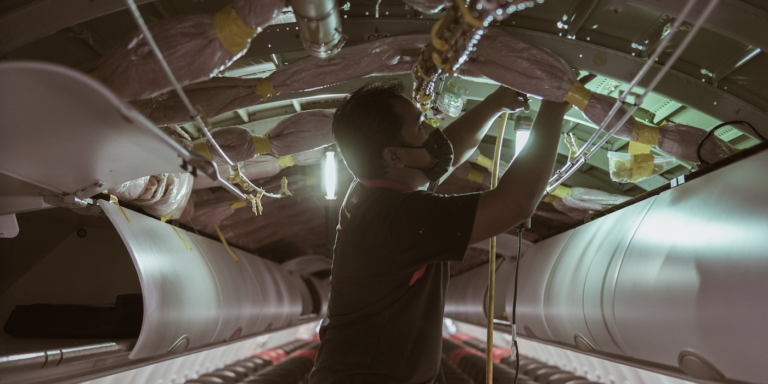Mobile satellite communications company, Inmarsat, has announced two new airline connectivity contracts, one with newly launched long-haul Spanish airline, World2Fly, the other with Asia Digital Engineering (ADE), an AirAsia Group subsidiary and provider of engineering services in Southeast Asia.
World2Fly has opted for Inmarsat’s GX Aviation inflight broadband, in partnership with SITA as the service provider, using its Internet ONAIR system. The GX technology will be fitted to the airline’s single-class, 432-seat A350-900s (one in service, one on order).
Meanwhile ADE’s first installation, completed onboard an AirAsia Airbus A320, marks an important milestone in the company’s ambitions to become a GX Aviation installation partner for other airlines in Southeast Asia. ADE will also establish a ‘one-stop shop’ for airlines that want to operate a fully connected fleet, combining its expertise in end-to-end engineering and MRO with Inmarsat’s connectivity technologies.
ADE was established in September 2020, after AirAsia Group consolidated its engineering and MRO assets to provide a centralised support service, not only for its own aircraft fleet, but also for other commercial airlines in the region.
Chris Rogerson, Inmarsat Aviation’s VP of global sales, said: “AirAsia Group is the largest customer for our GX Aviation inflight broadband solution in the Asia Pacific region, and one of the largest in the world. Our partnership has been a hugely successful one, based on a common passion about the exciting opportunities that digitalisation and connectivity provide to passengers and the aviation industry, especially as airlines recover from the pandemic.”
According to Inmarsat’s 2021 Passenger Confidence Tracker, demand for inflight connectivity has soared as passengers start returning to the skies after the Covid-19 pandemic. 41% of respondents believe that having wi-fi on their flights is even more important now than pre-Covid.
In other Inmarsat news, on 21 December, 2021 Inmarsat will add to its satellite fleet for the Asia Pacific region, launching I-6 F1 from Japan. The satellite is Inmarsat’s first dual-payload satellite, with both Ka-band (Global Xpress) and L-band (ELERA) onboard.





